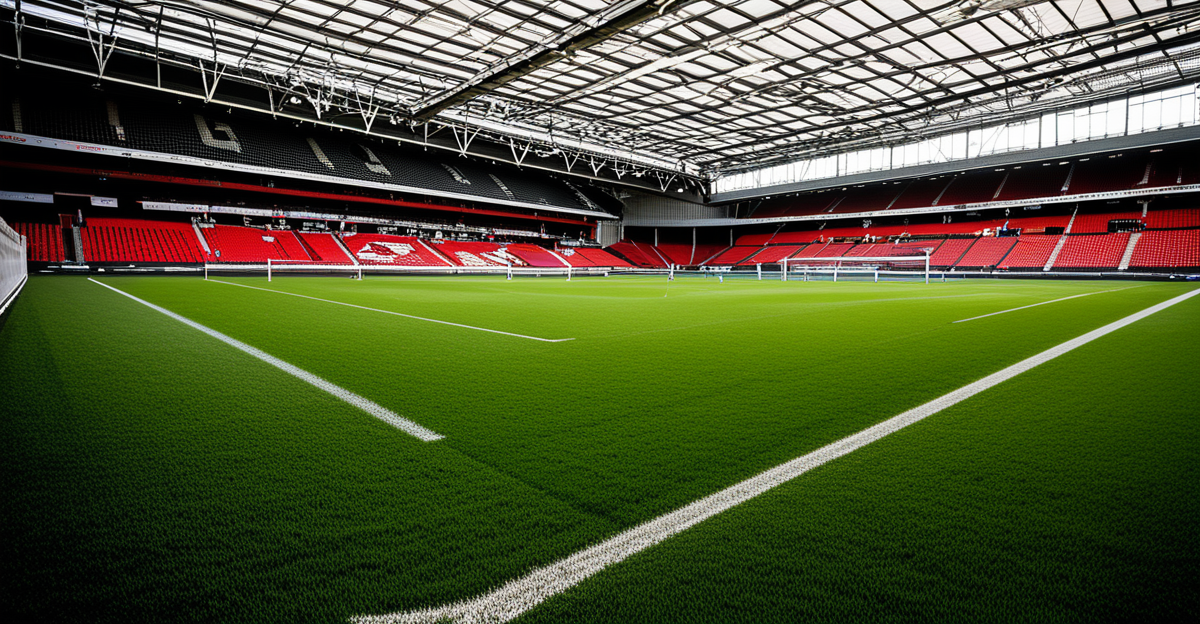Economic growth from UK sports infrastructure investment
UK sports infrastructure projects significantly drive economic benefits by stimulating both local and national economies. Investments in modern stadiums, training facilities, and multi-use sports venues attract large-scale events that boost tourism. These events draw visitors whose spending supports hotels, restaurants, and retail businesses, generating increased revenues for surrounding communities.
Beyond tourism, the investment impact extends to local businesses. Enhanced sports infrastructure often spurs new commercial developments nearby, creating diverse business opportunities. For example, sports-related retail outlets and service providers flourish, contributing to a more vibrant local economy. Additionally, improved infrastructure can raise property values in the vicinity, further benefiting local stakeholders.
Also to see : How Can the Evolution of British Football Influence Future Trends in UK Sports?
Importantly, this economic uplift helps sustain public services through increased tax revenues. By energizing the local economy, UK sports infrastructure investment serves as a catalyst for broader economic revitalization. This multifaceted impact underscores why prioritizing sports facilities is a strategic approach to economic development that delivers lasting benefits beyond the playing field.
Community and social development enhancement
Investing in community development through UK sports infrastructure fosters stronger social bonds. Shared sports facilities become focal points where diverse groups gather, boosting social cohesion and local pride. This encourages a sense of belonging, reducing social isolation and enhancing neighborhood connections.
Topic to read : How Are UK Sports Evolving in Response to New Technological Innovations?
One key social benefit is increased youth engagement. Accessible sports venues provide safe spaces for young people to develop skills, discipline, and teamwork. Regular participation promotes positive personal growth and deters involvement in antisocial behaviour. The availability of well-designed infrastructure can widen opportunities for youth from different backgrounds to participate.
Moreover, these projects improve accessibility and inclusivity, ensuring facilities accommodate people of varying abilities and ages. This inclusiveness nurtures social integration, making sports community hubs that welcome all individuals. By addressing barriers such as physical limitations or financial constraints, the investment impact extends beyond economics and directly benefits social welfare.
In summary, UK sports infrastructure investment plays a vital role in enhancing community development by uniting people, fostering youth progress, and promoting inclusive environments that strengthen social fabric.
Public health improvements related to infrastructure investment
Investment in UK sports infrastructure directly boosts public health by encouraging higher levels of physical activity. Well-designed facilities offer accessible and appealing venues, leading to increased sports participation rates among diverse age groups. As more people engage in regular exercise, the population benefits from improved cardiovascular health, reduced obesity rates, and enhanced mental well-being.
How does this translate to long-term benefits? Increased physical activity lowers risks of chronic diseases, thereby decreasing demand for medical treatments. This contributes to substantial savings in healthcare costs for public services. Studies reveal communities with upgraded facilities often see measurable improvements in health outcomes, such as fewer hospital admissions related to lifestyle illnesses.
The investment impact extends beyond individual benefits; healthier populations contribute to a more productive workforce and reduce strain on social care systems. Encouragingly, infrastructure projects targeting schools and public spaces amplify community-wide health gains by making sports participation more inclusive. This alignment of public health and sports infrastructure investment highlights its critical role in fostering sustainable, healthier societies across the UK.
Increasing sporting success and talent development
Investment in UK sports infrastructure plays a pivotal role in enhancing sporting success by creating clear talent pathways from grassroots to elite levels. Well-equipped facilities provide athletes with access to advanced training environments necessary for skill development and peak performance. This infrastructure supports both emerging athletes and established professionals, fostering sustainable athlete development.
How does this investment improve talent retention? By offering high-quality resources locally, promising sportspeople are more likely to remain within the UK system rather than seeking opportunities abroad. This continuity benefits national teams and strengthens the overall sports ecosystem.
Moreover, infrastructure projects cultivate national pride by elevating international performance. Successful athletes inspire wider community support and promote the UK’s sporting reputation on the world stage. The synergy between elite sport and robust grassroots programs ensures a steady pipeline of talent, reinforcing competitiveness in global competitions.
In summary, the investment impact extends beyond facilities; it shapes careers, builds national identity, and secures future success across multiple sports disciplines in the UK.
Job creation and urban regeneration
Investment in UK sports infrastructure serves as a powerful engine for job creation and urban regeneration. During construction phases, numerous direct employment opportunities arise—from skilled trades to project management. Following completion, ongoing operations require staff in facility maintenance, event management, security, and hospitality, sustaining local employment levels. This influx of jobs benefits communities by reducing unemployment and promoting economic stability.
How does sports infrastructure contribute to urban regeneration? These projects often target deprived or underdeveloped areas, transforming neglected spaces into vibrant activity hubs. New or refurbished sports venues attract visitors and businesses, triggering broader economic revitalization. Retail establishments, restaurants, and leisure services emerge, fostering a dynamic local economy beyond the sports site itself.
For example, cities across the UK demonstrate how strategic sports infrastructure investment catalyses lasting regeneration. Improvements in transport links and public spaces alongside venues enhance the urban environment, encouraging social interaction and commercial growth. Overall, the investment impact extends beyond construction, driving sustained economic and social uplift through job creation and community renewal.











